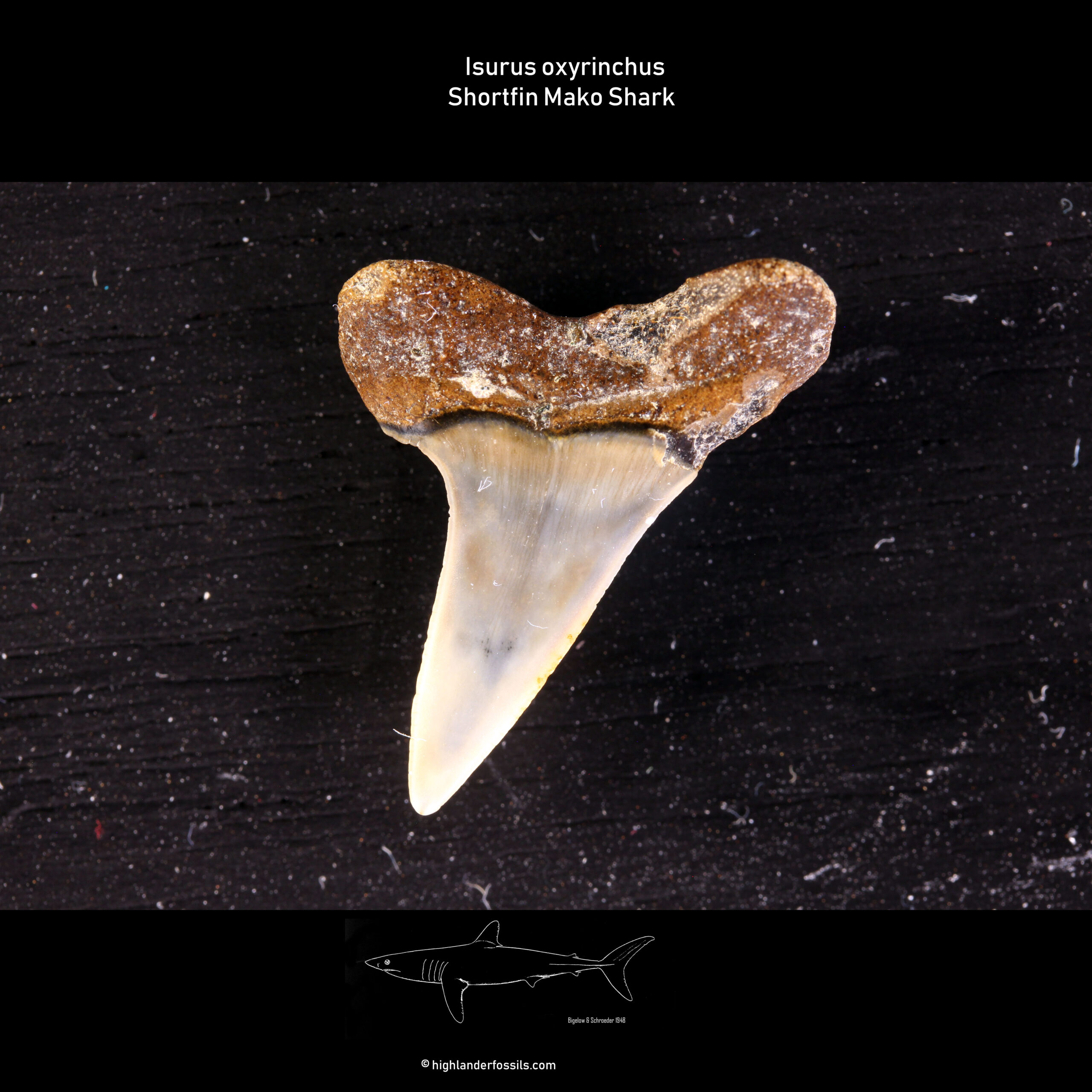Description
About Isurus oxyrinchus
Physical Description
Isurus oxyrinchus still lives in the oceans today so we know how they look like. The name Isurus comes from Greek isos = equal and oura = tail. There have been accounts of them reaching wel over 4,5 meters but most adults are near the three meters. They’re very streamlined fish and are one of the fastest sharks.
Their teeth look like: Dagger shaped while being at an angle. No serrations with a broad crown. Depending on the location and minerals present during the fossilization, these teeth can be found in a wide array of colours. The teeth found in Belgium tend to be blueish, greyish or brownish in colour. The size of teeth can also vary and gives an idea of the size of the animal.
Age and Distribution
These Isurus oxyrinchus is from the Pliocene of Belgium. This shark lived approximately 23-2,6 million years ago. We know that this shark species was very wide spread over the world as teeth can be found in many locations.
They’re most often found away from the coast to depths of 150 meters and in warm to topical climates. Adults feed on bony fish, cephalopods and other sharks.
About the Lamniformes Isurus oxyrinchus
Evolutionary Significance
The International Union for Conservation of Nature (IUCN) have classified Isurus oxyrinchus as endangered. This due to over fishing and what also does not help them is that females reach sexual maturity round about the age of 19 and only mate every three years.
Taxonomy
I. oxyrinchus belongs to the Lamnidae which is a subclass of the Lamniformes. They’re more commonly known as the Makerel sharks. As few other members of the Lamniformes from this time period are: Otodus megalodon, Megachasma cf pelagios, Cetorhinus maximus, Alopias latidens Cosmopolitodus hastalis and Lamna nasus.





